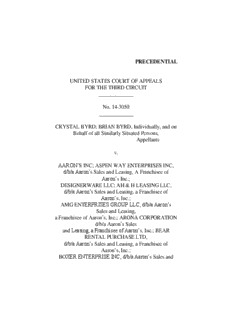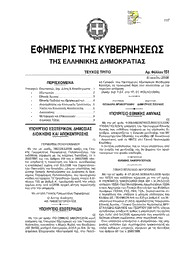
Dynamic Models of Advertising Competition: Open- and Closed-Loop Extensions PDF
Preview Dynamic Models of Advertising Competition: Open- and Closed-Loop Extensions
Dynamic Models of Advertising Competition International Series in Quantitative Marketing Editor: Jehoshua El iasberg The Wharton School University of Pennsylvania Philadelphia, Pennsylvania, U.S.A. Previously published books in the series: Cooper, L. and Nakanishi, M.: MARKET SHARE ANALYSIS Hanssens, D., Parsons, L., and Schultz, R.: MARKET RESPONSE MODELS: ECONOMETRIC AND TIME SERIES ANALYSIS McCann, J., and Gallagher, J.: EXPERT SYSTEMS FOR SCANNER DATA ENVIRONMENTS Dynamic Models of Advertising Competition Open- and Closed-Loop Extensions Gary M. Erickson University of Washington ~· ' ' Springer Science+Business Media, LLC Library of Congress Cataloging-in-Publication Data Erickson, Gary M., 1945- Dynamic models of advertising competition: open-and closed loop extensions I Gary M. Erickson. ' p. em. -(International series in quantitative marketing) Includes bibliographical references and index. ISBN 978-94-017-1316-0 ISBN 978-94-017-1314-6 (eBook) DOI 10.1007/978-94-017-1314-6 1. Advertising-Mathematical models. 2. Competition Mathematical models. I. Title. II. Series. HF5821.E75 1991 91-2344 659.1 '01 '5118-dc20 CIP Copyright© 1991 by Springer Science+Business Media New York Originally published by Kluwer Academic Publishers in 1991 All rights reserved. No part of this publication may be reproduced, stored in a retrieval system or transmitted in any form or by any means, mechanical, photo-copying, recording, or otherwise, without the prior written permission of the publisher, Springer Science+Business Media, LLC. Printed on acid-free paper. Contents Preface vii 1 Advertising and Competition 1 2 Analytical Models and Strategy Concepts 9 3 Analysis of a Lanchester Duopoly 39 4 Analysis of a Vidale-Wolfe Duopoly 65 5 Analysis of a Diffusion Duopoly 87 6 Summary and Final Considerations 101 References 111 Author Index 119 Subject Index 121 v Preface For years, I have been impressed by how dynamic markets are. Marketing strategies are rarely successful without adjustments over time, and marketing managers need constantly to monitor, and anticipate when possible, important changes in the marketing environment, so that they can adapt their marketing strategies to changing market conditions. It strikes me as important that the dynamic elements of marketing be modeled and studied, and a significant part of my research activity has been dedicated to exploring the nature and implications of dynamic marketing strategies. The marketing field has used various models and methodologies in the attempt to understand dynamic markets. I must thank my dissertation advisor, Dave Montgomery at Stanford, for originally turning my attention toward time-varying parameter models some 14 years ago. From that plat form, I have proceeded to search for models that capture the essence of dynamic marketing, as well as for methodological tools, empirical as well as analytical, that allow insightful study of such models. Much of the dynamism seen in markets can be attributed to competi tion, and efforts to understand the role of dynamic marketing competition strike me as being especially valuable and insightful. I was introduced to one model in particular, the Lanchester model, through a 1979 review by John Little. The Lanchester model continues to impress me as one that is elegantly simple while containing both the competitive and dynamic essence of marketing-and in particular advertising-situations. Other models as well, in particular the Vidale-Wolfe and new-product diffusion models, have been the subjects of many research efforts in marketing and management science and continue to have potential for insight regarding dynamic marketing competition. The present monograph is an analytical exploration into the differences and similarities between two types of solution concepts, open-loop and closed-loop, that can be defined in models of advertising competition that are interpreted as differential games. I particularly wish to thank the series Vll Vlll PREFACE editor of the developing International Series in Quantitative Marketing, Josh Eliashberg, for providing both encouragement and advice regarding the monograph. Zachary Rolnik, Editor with Kluwer Academic Pub lishers, has also been extremely helpful and supportive. It helps immensely to have the support of people like Josh and Zachary, who have generously allowed me to pursue this investigation into dynamic advertising competi tion. Also, I must acknowledge the extremely helpful comments of two reviewers, which have helped improve the monograph greatly. Finally, I would like to express my appreciation for the professional leave of absence, granted by the University of Washington for Autumn Quarter, 1989, which helped greatly in the completion of the monograph. Gary M. Erickson Seattle, Washington Dynamic Models of Advertising Competition 1 ADVERTISING AND COMPETITION A critical aspect of the advertising budgeting process involves competitive issues-anticipated spending levels of major competitors, effects that competitive advertising may have on the firm's market share, sales, and profit, and the interactive nature of a competitor's advertising with a firm's own. Competition is ignored only at the firm's peril; empirical studies (e.g., Little 1979; also see the empirical survey below) have shown quite clearly that competitive advertising can have a direct, and negative, effect on a company's market share. Also, management practice appears to recognize the importance of competition; in a survey of leading U.S. advertisers, Lancaster and Stern (1983) reveal that, among various general characteristics describing the advertising budgeting process, "competi tive effects" were considered by 52°/o of the sample (second only to "communication effects" at 55°/o). Advertising competition is both dynamic and interactive. Also, in certain markets, advertising is the primary competitive marketing tool. A case in point is the beer industry, which has evolved into a market in which heavy advertising expenditures are necessary not only to succeed but also to survive. The current situation has two companies, Anheuser-Busch with 40°/o of the market and Miller with 21 °/o, "threatening to run away with the beer business" (Business Week 1989). The two market leaders are also 1
Description:The list of books you might like

Rich Dad Poor Dad

Corrupt (Devil's Night #1)

Haunting Adeline

Better Than the Movies

Dynamics of Structures A Primer

Frontera

Episteme - Filosofia e História das Ciências em Revista vol. 11, n. 24, 2006

DTIC ADA523865: Ocean Surface Wave Optical Roughness: Innovative Polarization Measurement

As imagens, o Antigo Regime e a “Revolução” no Mundo Luso-Brasileiro

Warum Manner nicht zuhoren und Frauen schlecht einparken

Byrd v. Aaron's, Inc.

Un canalla que no lo era

El género Houssayanthus (Sapindaceae) en México

Three Creeks timber sale project final environmental impact statement

British by AUTHOR

C.A. No. 12088-12089/2018

Union Government, Extraordinary, 1993-01-29, CSL, Ref. CSL

Bullets Billets by Bruce Bairnsfather

Korpuskatalog till doktorsavhandling "Vikingatida runbleck: Läsningar och tolkningar" / Korpuskatalog till "Viking-Age Runic Plates: Readings and Interpretations"

The Luck of the Dudley Grahams by Alice Calhoun Haines

Greek Government Gazette: Part 3, 2006 no. 151

Cabrales


